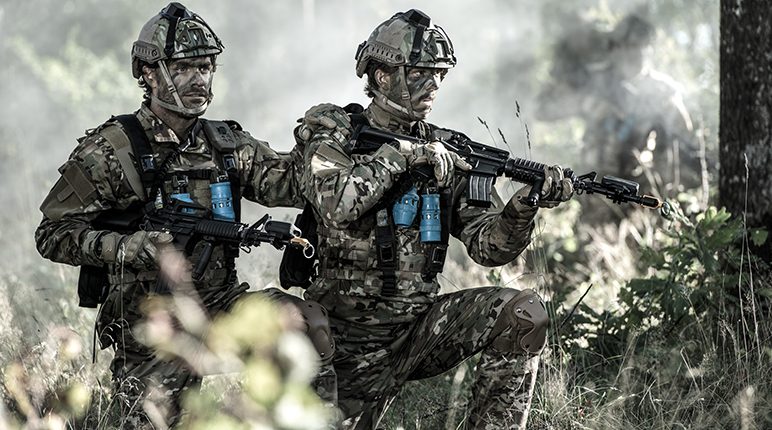Kenya has signed a contract with Saab to provide its military with its Gamer laser-based Tactical Engagement Simulation Systems (TESS) system.
Saab announced that it was awarded the contract at the end of 2021 under Kenya’s Ministry of Defence Combat Training Centre (CTC) competition. However, details have only just emerged.
Saab will provide a completely new generation solution for live training including soldier systems (personnel detection devices), vehicle training systems, hand grenades, and training applications for a variety of weapons.
The contract also includes the latest generation Exercise Control System (EXCON) and communication system, in addition to training courses for users and maintenance personnel.
The GAMER EXCON software provides detailed tracking and analysis of activity down to individual level, enabling thorough after-action review. The system does not include instrumentation for indirect fire from mortars, but this will be simulated using the Area Weapons Effects Simulator (AWES) system via EXCON.
“This is the first contract that we have won with the Kenyan Defence Force which opens up a new market for us in Africa. It’s a great honour and responsibility to have been selected to provide our training systems to the Kenya Army. Our solutions will ensure a cost-effective way to train, with the most realistic training solution on the market,” says Åsa Thegström, head of Saab’s business unit Training and Simulation.
Saab will provide the army with a proven, off-the-shelf and technically advanced training system that enables a wide range of training scenarios and the highest realism, this will significantly improve Kenya’s training capability, as well as enhance the Army’s ability to conduct and analyse the outcomes of force-on-force exercises.
‘We will be supplying around 800 soldier kits based on our deployable Gamer product line,’ Hans Lindgren, head of Saab’s business development at training and simulation said on Linkedin.
The system will be based at the KDF School of Infantry at Isiolo and delivery will be completed by the end of 2023. Saab will also provide training for users and maintenance personnel, and a limited support contract.
Kenya is no stranger to laser-based tactical engagement simulation systems (TESS), having been the recipients of Cubic’s Multiple Integrated Laser Engagement System (MILES) combat simulator through a US FMS contract.
Basically, the MILES system uses lasers and blank cartridges to simulate actual battle, with lasers attached to weapons that emit beams that are detected by small laser sensors carried by individual soldiers participating in the training.
The Kenyan Army has also used Saab equipment provided by the British Army during joint training as part of the UK’s Tactical Engagement Simulation in Kenya (TESIK) exercises.
The British Government awarded Ravenswood Solutions a five-year contract to provide the British Army with tactical engagement simulation in Kenya (TESIK) in December 2021.
Ravenswood Solutions said it will provide British troops training in Kenya and other locations with instrumentation, weapon simulators, battlefield effects, and instrumented after-action reviews (I-AARs) in collaboration with Swiss-based laser engagement systems provider RUAG, global logistics provider Agility, and UK-based engineering and technical services corporation QinetiQ.
Björn Linderö, Saab director of live training, told Jane’s that while laser-based direct fire in a tactical engagement simulation system (TESS) will accurately replicate true ballistics for larger weapon systems, lasers cannot simulate indirect non line-of-sight (NLOS) weapons. Saab’s new system to simulate NLOS anti-tank guided weapons (ATGWs) within instrumented TESS, based on the Spike long-range (LR) missile and the French MMR, claims to overcome this, while keeping an operator in the loop.
The system uses the virtual One World Terrain, developed by Vricon for the US Army’s Synthetic Training environment (STE), which is injected into an emulated weapon sight. The weapon is then integrated into the TESS via the communications system, so its position is known by the system. The locations of other live players are similarly injected into the sight picture. When the missile is ‘fired’ the operator can switch to the target seeker head view, enabling the virtual missile to be flown over the virtual terrain.
When the gunner locates the target – a live player displayed in the virtual environment – the missile can be locked on to it or flown in. On impact, the effect is transmitted through the instrumentation system to the target. Unlike some indirect fire simulations, exercise control cannot provide this effect because the gunner is in the loop, Linderö noted, adding that the same capability could be used to simulate a live video stream from an unmanned aerial vehicle (UAV).
